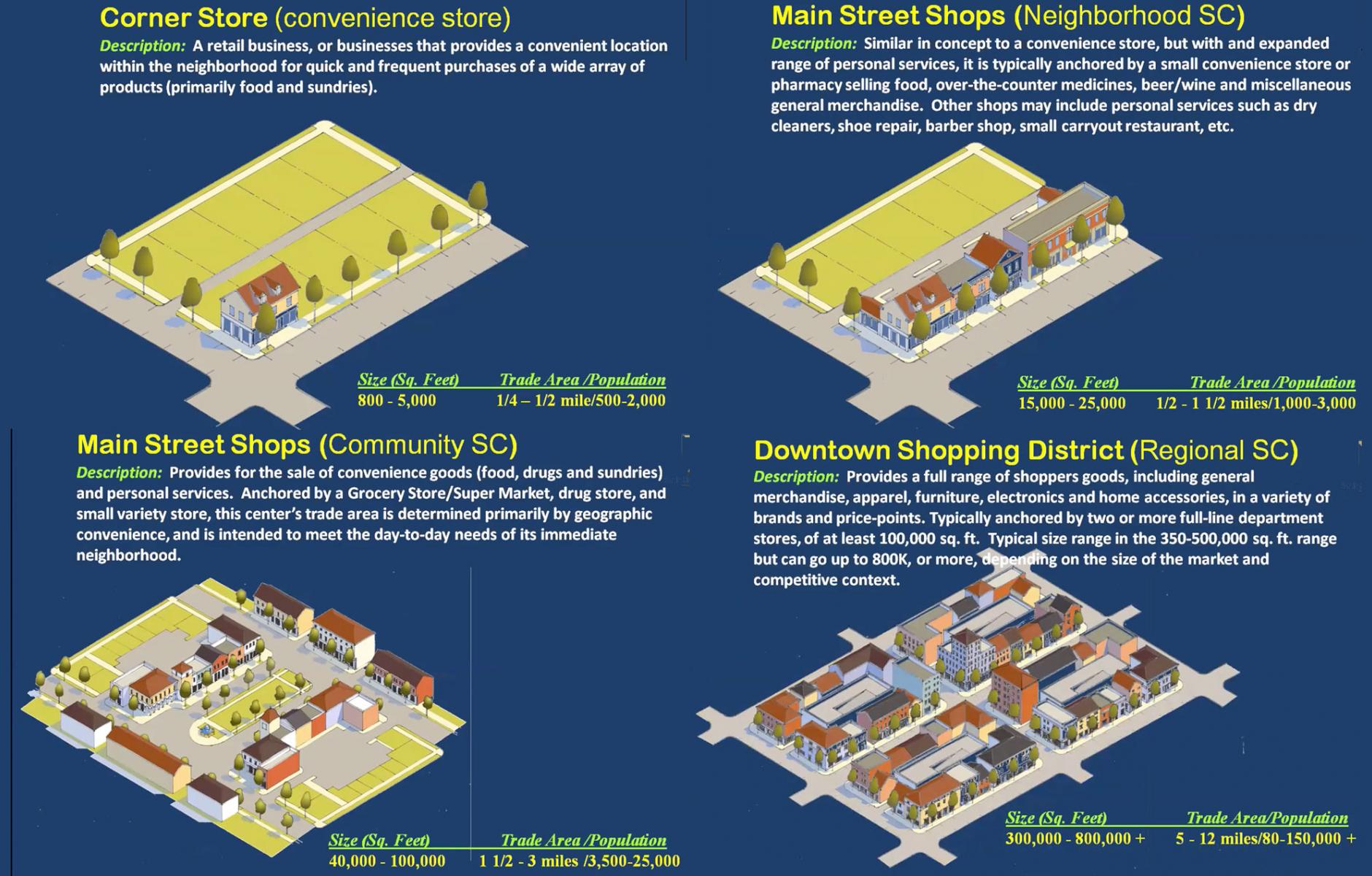
Retail types that have survived for centuries
The retail industry is currently going through massive upheaval due to COVID-19, and this is on top of turmoil that was taking place over the last decade due to general societal trends.
Some of this upheaval is good, but it is damaging to businesses, jobs, and people’s lives in the near term. At CNU 28 last week, retail expert and planner Robert Gibbs reported that apparel sales are down 90 percent, and home furnishings are down 50 percent.
As bankruptcies are reported in many retail and restaurant firms and there is potential for massive change and destruction, it is important to remember the retail trade place types that have survived for hundreds of years. Seth Harry, an architect and a retail expert, presented these types at CNU.
There are four primary mixed-use walkable retail types, Harry says—illustrated in his images at the top of this article. These types have survived for centuries, including many decades in the late 20th Century when the retail industry didn’t recognize them as legitimate types to build in the modern world.
- Corner stores. The smallest increment of brick-and-mortar retail, corner stores are crucial to supply basic needs, without a car, in a walkable neighborhood setting. They typically range from 800 to 5,000 square feet and serve a trade area of a quarter mile to half mile with 500 to 2,000 population, Harry says. The corner store is analogous to a “convenience store” in the automobile-oriented retail world.
- Main Street Shops, the equivalent of a “neighborhood shopping center.” This is a small main street, with 15,000 to 25,000 square feet, with a trade area of a half mile to 1.5 miles. It serves 1,000 to 3,000 people. This is similar in concept to a corner store, but with an expanded range of goods and services. It is typically anchored by a small convenience store or pharmacy. Other shops may include a carryout restaurant, hair salon, or dry cleaner.
- Town Centers. In the image, Harry shows this as Main Street Shops, the equivalent of a “community shopping center.” This is a larger main street, with 40,000 to 100,000 square feet of retail, serving a trade area of 1.5 to 3 miles, with 3,500 to 25,000 population. This kind of a center is typically anchored by a grocery store, drug store, and small variety store. It includes a greater range of goods and services than the smaller main street.
- Downtown Shopping District. This is the equivalent, in the automotive world, of the regional shopping center. The Downtown Shopping District should provide the full range of goods, including general merchandise, apparel, groceries, electronics, and home accessories, in a variety of qualities and price points. It is typically anchored by two full-line department stores. Typical size of the Downtown Shopping District is 350,000 to 800,000 square feet or more.
As these types have survived for centuries, they are likely to survive for centuries more—despite Amazon and changes in technology, economy, and culture. Many of these types, especially Downtown Shopping Districts, have made a comeback in the last decade as populations have returned to downtowns. Regardless of pandemics and current upheavals, walkable urban living is valued again and these retail place types will continue to survive and thrive long into the future—even as they experience short-term difficulties.




